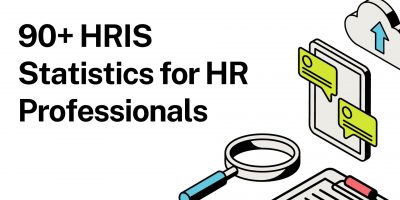Why is Attendance Tracking Crucial?
From improved scheduling to increased productivity – explore why implementing an effective time-tracking and attendance system can be vital in the workplace.

The Human Resources (HR) department is essential in promoting and supporting employee well-being. While it is ultimately the responsibility of each individual to take care of their health, HR can provide resources, policies, and programs that help employees prioritize and manage their physical, mental, and emotional health.
Some specific ways that HR can support employees include:
Providing Access to Healthcare Benefits
Medical insurance, dental insurance, vision insurance, counseling, and therapy are some of the most common benefits employers offer to support employees. HR needs to provide access to healthcare benefits because it promotes employee health and well-being, which is essential for maintaining a productive and engaged workforce.
When employees have access to healthcare opportunities, they are better equipped to manage chronic conditions, receive preventive care, and seek treatment for acute health issues. This not only improves their overall quality of life but also helps them to perform better at work.
Additionally, offering healthcare benefits can help organizations attract and retain talented employees who value access to comprehensive healthcare coverage. It is an integral part of a competitive benefits package that demonstrates the organization’s commitment to the well-being of its employees.

Flexible schedules, remote work options, and paid time off allow employees to balance their work and personal lives. This is vital in maintaining a workforce that will reciprocate being treated well with greater productivity, higher levels of engagement, and increased job satisfaction.
When employees have the flexibility to manage their work schedules around their commitments, they can better meet their obligations at work and at home. This can reduce stress and improve overall well-being.
In addition, employees who can achieve a better balance between their work and personal lives are often more engaged and productive at work, as they are better able to focus on their tasks and are less likely to experience burnout or stress-related health issues.
By offering flexible work arrangements, HR can demonstrate its commitment to supporting its employees’ well-being while promoting a positive and productive work environment.
Implementing wellness programs such as encouraging employees to adopt healthy habits, exercise programs, healthy eating initiatives, and stress management workshops is another way for human resources to engage employees and maintain a healthy workforce.
Wellness programs can provide employees access to resources and support that enable them to adopt healthy habits, manage stress, and improve their overall quality of life. By encouraging employees to prioritize their physical and mental health, organizations can create a culture of wellness that values and supports the well-being of its employees.
This can help reduce absenteeism, increase productivity, and improve employee morale, positively impacting the organization’s overall success. Additionally, companies that offer wellness programs can attract and retain talented employees who value access to resources and support that help them to lead healthy and balanced lives.

Creating and maintaining a healthy environment for employees that values and promotes well-being is crucial. This can be seen in many ways, such as providing a safe and comfortable workplace, encouraging work-life balance, and recognizing employees prioritizing their health and wellness.
It is critical for HR to create a positive workplace culture because it can significantly impact employee engagement, job satisfaction, and overall organizational success. A positive workplace culture values and supports employees by fostering open communication and promoting a sense of community and belonging.
Thus, employees who feel valued and respected are more likely to be engaged and committed to their work. Additionally, a positive workplace culture can help attract and retain talented employees looking for an environment that supports their growth and development.
By creating a culture that values collaboration, innovation, and continuous improvement, organizations can harbor a culture of shared purpose and make sense of community that helps to drive success. Overall, a positive workplace culture should be a top priority for HR.
According to a World Health Organization (WHO) study, depression, and anxiety are leading causes of lost workplace productivity, costing the global economy an estimated $1 trillion annually.
The study found that depression and anxiety can significantly impact employee well-being and lead to adverse outcomes, including reduced productivity, absenteeism, and higher healthcare costs.
Moreover, it highlights the importance of addressing mental health in the workplace and promoting employee well-being to improve overall productivity and reduce the economic burden of mental health issues.
Employee well-being is a shared responsibility between the employer and the employee. HR can create policies and programs supporting employee health, but it is up to each individual to take advantage of these resources and prioritize their health and wellness.

In conclusion, HR plays a significant role in supporting employee well-being within an organization.
HR is responsible for creating a positive workplace culture that values and supports employees, provides access to healthcare benefits, implements wellness programs, and offers flexible work arrangements that allow employees to balance their work and personal lives.
These efforts promote employee well-being and can lead to increased engagement, higher productivity, and better business outcomes. HR’s commitment to employee well-being is essential for creating a work environment that supports its employees’ physical, emotional, and mental health while driving long-term success.
Organizations can attract and retain talented employees by prioritizing their well-being, fostering innovation and collaboration, and achieving strategic goals and objectives.
Browse our curated list of vendors to find the best solution for your needs.
Subscribe to our newsletter for the latest trends, expert tips, and workplace insights!
From improved scheduling to increased productivity – explore why implementing an effective time-tracking and attendance system can be vital in the workplace.

Behavioral psychology argues that people are driven by motivation, giving rise to incentives as tools to influence people’s choices. But what are incentives, and what is the extent of their transformative potential in the workplace?

Despite their popularity, are employee incentive programs truly effective, or do they secretly undermine the very productivity and morale they aim to boost?

Explore HRIS statistics for informed decision-making and streamlined human resource management.
Used by most of the top employee benefits consultants in the US, Shortlister is where you can find, research and select HR and benefits vendors for your clients.
Shortlister helps you reach your ideal prospects. Claim your free account to control your message and receive employer, consultant and health plan leads.